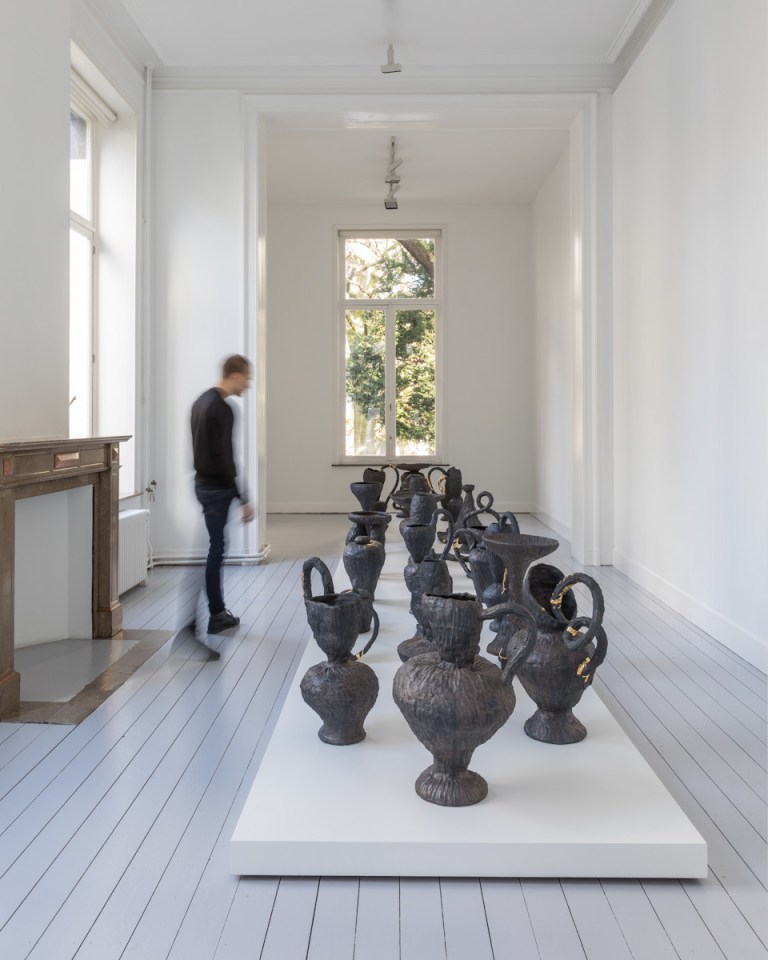
As I work, I think of how the final pieces will look. Porcelain is a strange material. Silky smooth when fired with a grainy feel if left unglazed. I want to give the surface a skin-like feel.

The Belvedere Torso in the Vatican collection was a seminal inspiration for Michelangelo. Signed “Apollonius son of Nestor, Athenian”. Marble acquires a softness that bellies its nature as stone. Sculpture in stone influences my choice of material. But I choose ceramic as a pliable stone which is transformed by the alchemy of heat. Porcelain is like the white marble of stones and glazing it seems to me betrays the traces of handling and so an essential characteristic of its making.
Why do I choose the Belvedere as an example of marble statuary? Because arms and legs are functional, locomotory and grasping. The body is the centre of physical being from which other things radiate. As it was with our primordial ancestors, so it is with the forms I am working on.
Glazing speaks to me of function, impermeability. The body is not impermeable but in continual transaction with the world. In early times the clay was burnished to render vessels less porous. Decoration has always been applied to ceramics, from the rhythmical marking of the beaker people, to the finest renderings. From symbolism to shear exuberance and delight, ceramics have diversified and many left function behind long ago evidenced in the heritage of form only.
I have experimented extensively with Parian clay which was developed to look and feel like marble, it is soft, vitreous and warm, but it is hellishly difficult to use and is subject to warping and cracking. It is better suited to casting large pieces. Casting at this stage is not for me, it is not sufficiently spontaneous and better left as a means of reproduction. However, I shall continue to work with it on smaller scales.

I do not want to use glaze because it covers detail and the sculpture looses the surface nuances developed during its making. However, the raw biscuit low fired material is brilliant white and unsubtle. It is also prone to get dirty and due to its porosity very difficult to clean. When fired to a higher temperature, the surface vitrifies and becomes sealed to a large extent, less porous and prone to atmospheric damage and the dirty that comes with handling and storage. However, the crystalline surface is still very white and lacks the organic surface quality I am looking for. When the porcelain is unfired and still wet, it has a flesh like look, a warm grey that responds to handling developing a beautiful sheen where it is burnished. However, this disappears on firing. I have looked for a finish that can restore to some extent that sense of sensual softness and has the following characteristics:
- does not yellow over time,
- is colourless,
- does not create a thick layer,
- is not glossy
- and is easily restored.
Having experimented with a number of possible candidates I have found that the humble paraffin wax candle is the ideal substance. The porcelain is heated with a hot air blower and the wax rubbed on building a very thin layer that penetrates the microscopic pores on the surface and creates a colourless, translucent finish. Finally it is burnished with a cloth or brush.










